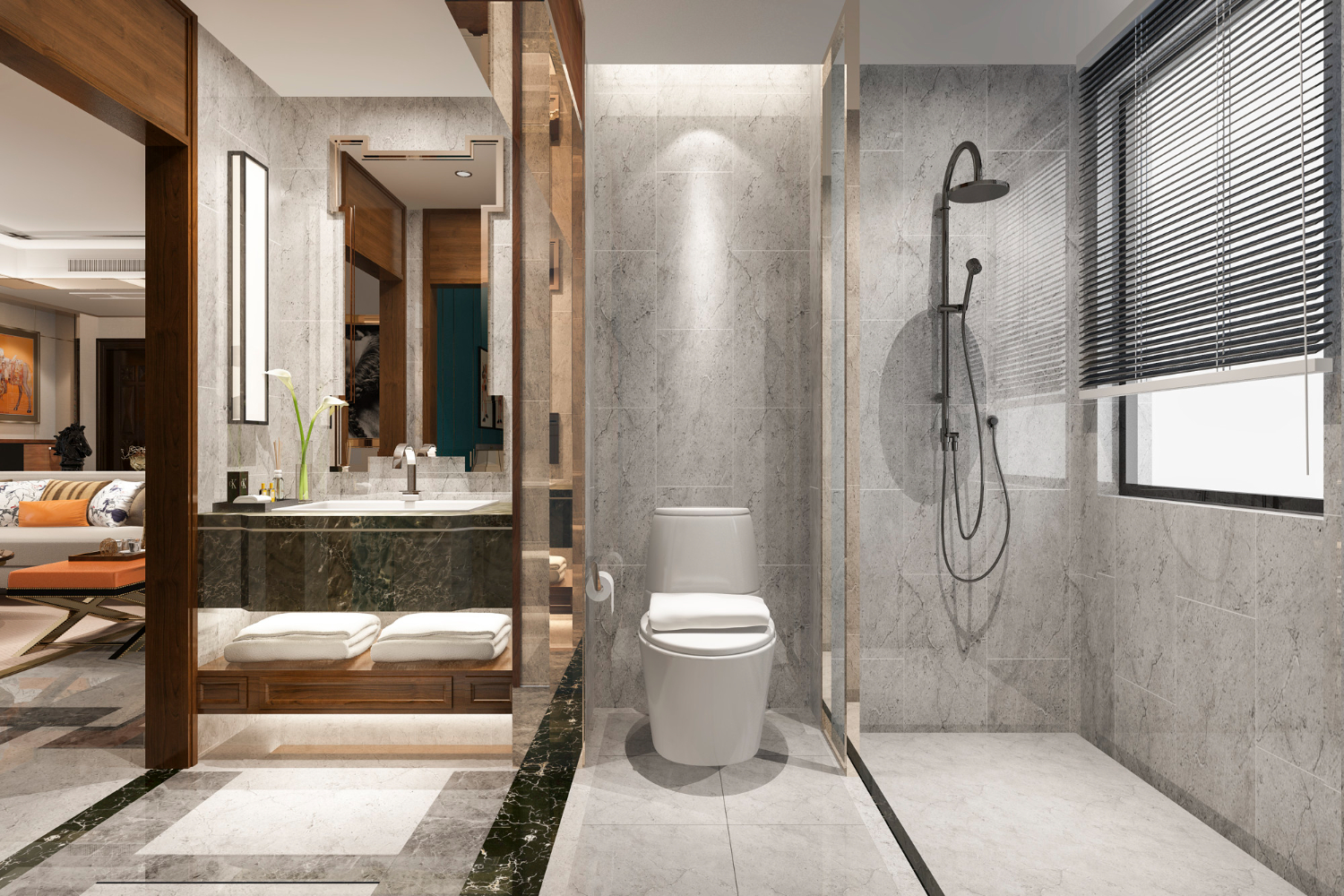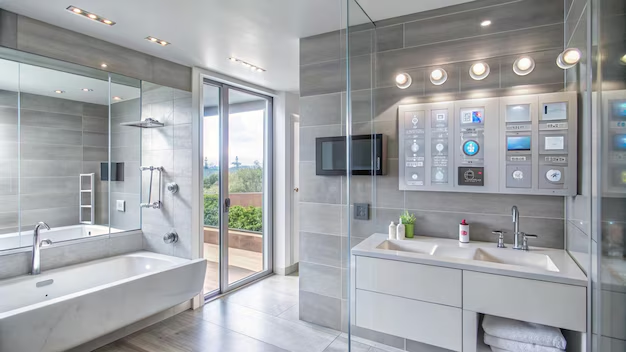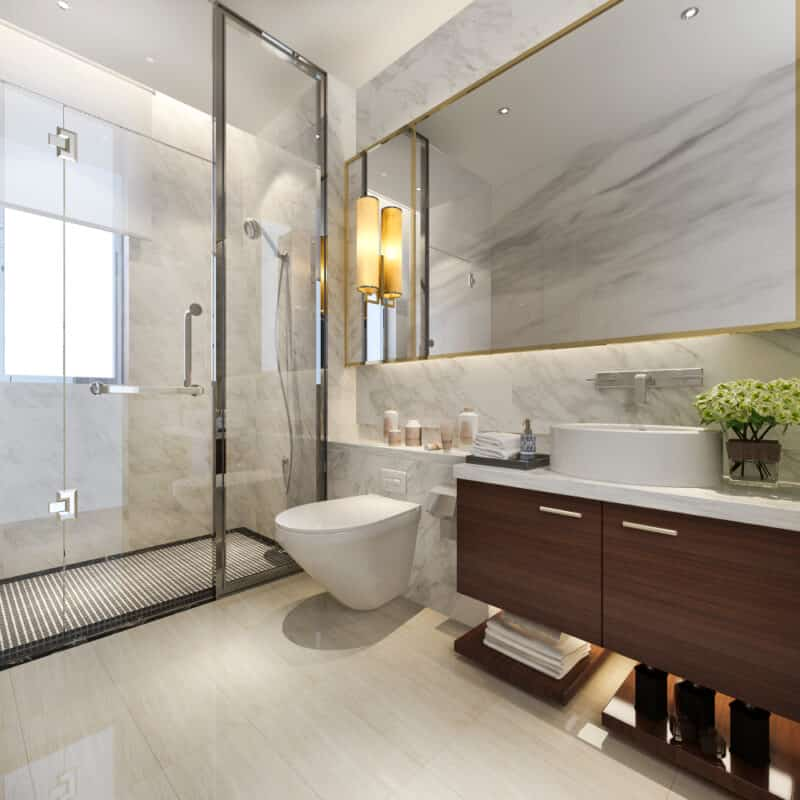When choosing modern bathroom accessories, homeowners often face a central question: how much extra value do you get when you move from budget to premium? In a world of numerous bathroom fitting options, the line between “good enough” and “luxury bathroom fittings” often lies in design, materials, durability, and user experience. In this post, we’ll compare budget vs. premium bathroom accessories, highlight where the real differences lie, and help you make an informed choice.
1. Material Quality & Finish
A key gap is in materials. Budget bathroom accessories are often made of lower-grade metals (e.g., cheaper stainless steel or zinc alloys) or coated at a lower cost. Over time, the finish may corrode, peel, or discolour. Premium bathroom fittings, in contrast, use high-grade brass, corrosion-resistant stainless steel, PVD coatings, or durable electroplating. The result: the look stays sharp, and the accessory lasts longer.
Example: A premium bathroom faucet will feature robust valves and superior seals, enabling it to resist leaks and mineral deposits. SalusIndia’s site mentions a range of bathroom faucets among modern accessory trends. salusindia.com
2. Design, Aesthetic & Precision
Modern bathroom accessories aren’t just functional, they are part of the design statement. Budget pieces tend to follow basic styles with limited finishes and modest detailing. Premium lines often offer refined shapes, crisp edges, hidden joints, or minimalist silhouettes. They may also be available in finishes such as matte black, brushed gold, or unique textures.
In the SalusIndia blog, for example, they highlight designer wash basins and wall-hung toilets as aesthetic-oriented choices. Salusindia Premium accessories aim to match or complement these statement pieces.
3. Functionality & Features
Budget products often stick to the essentials. Premium bathroom accessories may bring additional or smarter features:
- Softer or smoother operation (e.g. slow-close lids, better valve action)
- Water-saving or eco-friendly features (e.g. aerators, dual-flush)
- Integrated technology (touchless operation, sensor faucets)
- Better sealing or warranty
For example, a premium shower panel or rain shower setup may include multiple jets, thermostatic controls, or digital settings, whereas a budget alternative offers only basic water flow. SalusIndia’s “modern bathroom accessories” list includes showers and multi-function shower heads among trending items.
4. Longevity & Durability
A major difference is how long the product lasts under real-world use and water conditions. Premium accessories are crafted from superior quality raw materials, feature enhanced finishes, and undergo rigorous quality control. This translates to a lower risk of rust, leaks, or damage, even in hard-water environments.
Budget items may be suitable in the short term, but they often show wear sooner, which can result in additional replacement costs and inconvenience.
5. Warranty, After-Sales & Support
Premium brands usually back their products with extended warranties and better customer support. If a part fails, you can get replacements, servicing, or repair. Budget brands may offer limited or no warranty support, leaving you to bear the burden of repair or replacement.
6. Price vs Value: What to Prioritize
The “premium” label doesn’t always guarantee a worthwhile upgrade. You should weigh the cost against the benefit to your bathroom’s use, appearance, and longevity. Here are some guidelines:
- In high-moisture or hard-water areas, paying more for corrosion resistance is often justified.
- Visible fixtures (e.g. faucets, accessories on display) often benefit more from premium styling.
- Hidden or backup accessories (e.g. secondary valves, internal parts) can sometimes be budget versions, if they have minimal exposure.
- Consider the lifetime cost: replacing a cheaper item more often may actually be more expensive in the long run.
7. How to Spot a True Premium Accessory
When evaluating a “luxury bathroom fitting,” look for:
- Solid brass or thick stainless body (not hollow or thin castings)
- Seamless joints, precise machining
- Smooth operation, no squeaks or looseness
- Corrosion-resistant finish (PVD, electroplated, ceramic coating)
- Serviceability: Can you replace cartridges and parts?
- Brand reputation, warranty, and user reviews
You can also compare with what SalusIndia promotes in their modern accessory catalogue (wash basins, faucets, shower systems, diverters, etc.). salusindia.com
8. Applying This to Your Bathroom Project
If your goal is to upgrade your bathroom with a balance of style and budget, here’s a suggested approach:
- Prioritise upgrading the items you use most frequently, such as faucets, showerheads, and designer wash basins.
- Use mid-tier fittings for secondary or hidden parts (e.g. internal valves, connectors).
- Match premium accessories in terms of finish and style to create a cohesive bathroom.
- Always check reviews or real installations to see how a product fares in actual conditions.
Conclusion
When comparing budget vs premium bathroom accessories, the gap lies not just in price, but in durability, design, feature set, and long-term reliability. In the realm of modern bathroom accessories and fittings, investing in thoughtful, premium, well-made pieces often pays off in terms of maintenance savings, longevity, and overall satisfaction. That said, a smartly balanced mix of spending more where it matters and saving where it doesn’t can give you a bathroom that feels luxurious without overspending.




